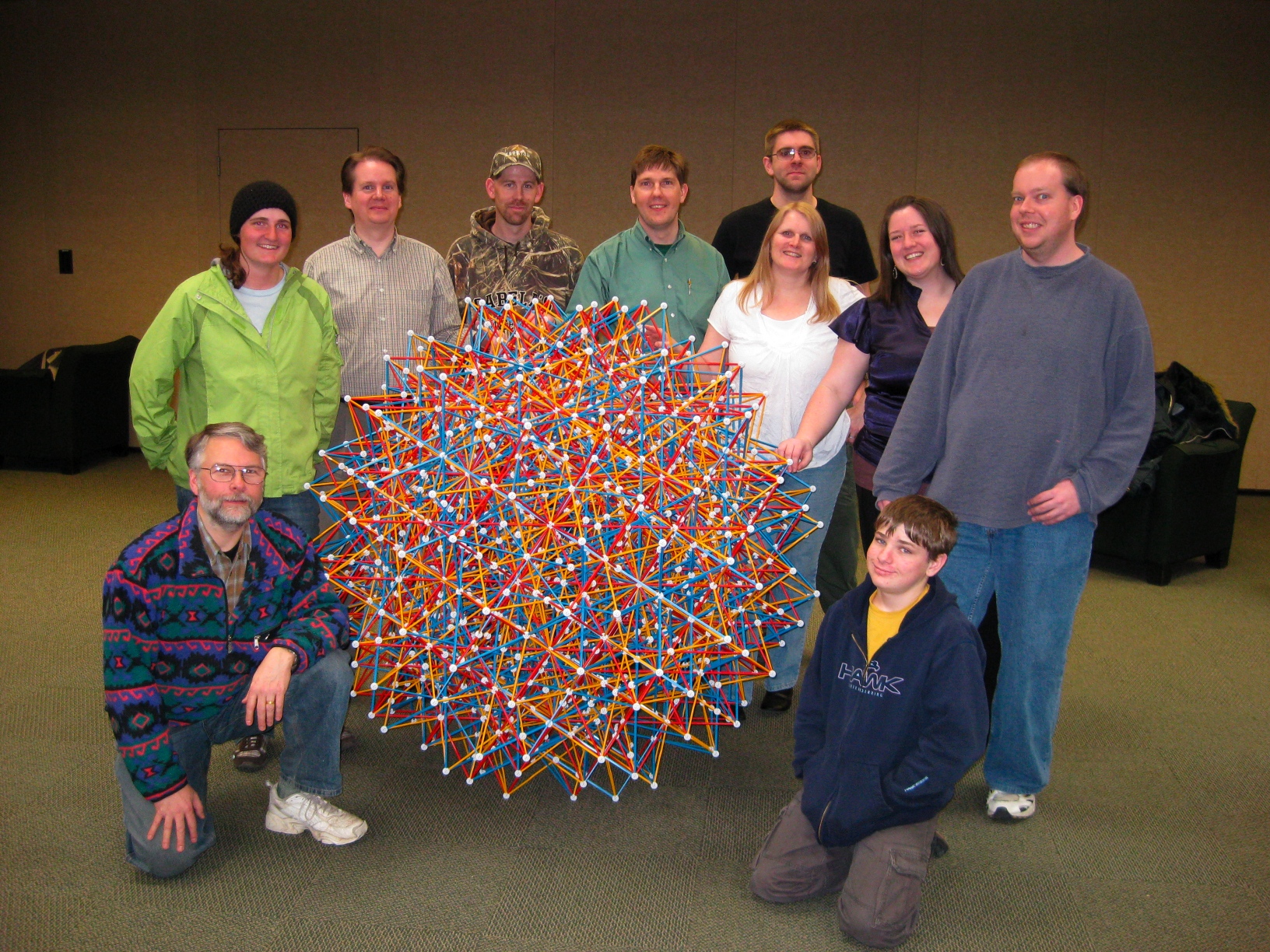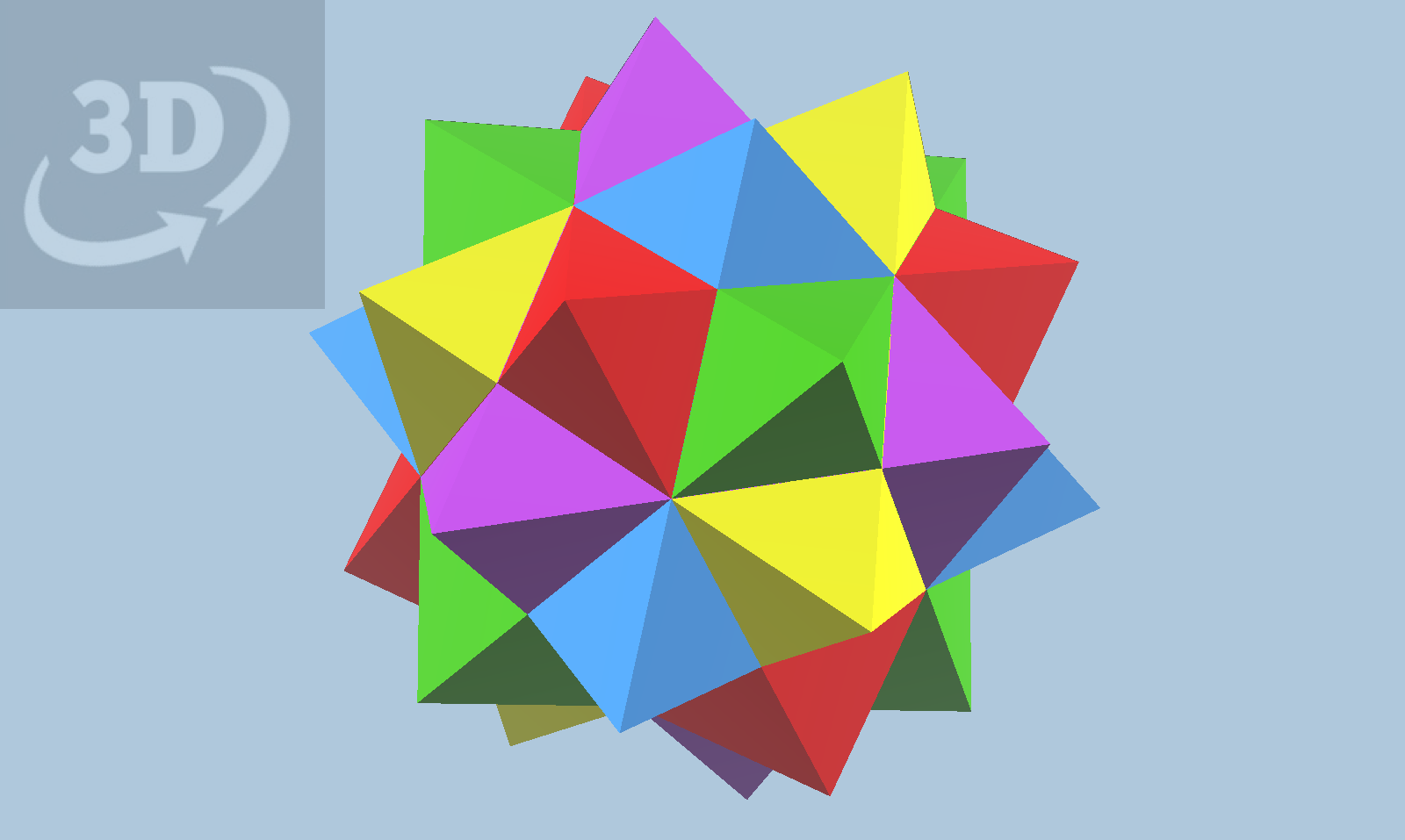
The Model and a few of its Assemblers
Introduction
This is a Zome model of a 3-dimensional projection of the regular compound of seventy-five 16-cells. It was assembled by roughly 60 people, mainly students, on Tuesday, March 10, 2009, in the Student Center of Utah Valley University, in Orem, Utah. The construction time was about 10 hours. At any given point throughout the day, there were about 5-10 people working on it simultaneously. The model weighs about 30 pounds and it measures about 5 feet in diameter.
As of this writing on March 29, 2009, the model is currently on display on the fourth floor of the UVU Library. You are welcome to visit and see it. In the meantime, you can see this for more photos.
Some Math
The "16-cell" is the convex hull of the set consisting of the standard basis of R4 and the negatives of these vectors. It is the 4th element of the infinite sequence of "cross-polytopes". Its facets are comprised of 16 regular tetrahedra, thus explaining the name. This model represents a compound of seventy-five different copies of the same 16-cell, each obtained from another by an orthogonal transformation of R4. These projections, shown here and here, are naturally constructed using Zome.
The 600 vertices of this polytope coincide with those of the regular convex 120-cell. These vertices also happen to coincide with the vertices of the final stellation of the 120-cell. These vertices also coincide with the vertices of the regular compound of twenty-five 24-cells. Thus, one may regard these four polytopes as close siblings.
The closest 3-dimensional analogue to this polytope is probably the compound of five octahedra. This polytope is also comprised of a certain number of cross-polytopes. Moreover, no vertices from distinct components occupy the same point, in contrast to the compound of five cubes or the compound of ten tetrahedra. In fact, one may regard this compound as a compound of five copies of the regular compound of fifteen 16-cells.

Reference
H. S. M. Coxeter. Regular Polytopes. 3rd ed. Dover Publications Inc., New York, 1973.